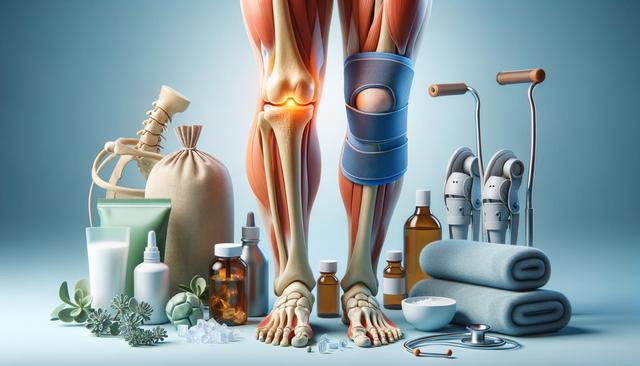Understanding the Common Causes of Knee Pain
Knee pain is a widespread issue that affects people of all ages and lifestyles. Whether you’re an active individual or spend most of your day sitting, knee discomfort can arise due to a variety of reasons. One of the most common causes is overuse, which can happen through repetitive motions such as running, jumping, or squatting. Other factors include injuries like ligament tears, arthritis, or even poor posture and walking habits. Identifying the root cause of your knee pain is essential for finding the most effective treatment. It’s also important to note that knee pain doesn’t always stem from the knee itself—issues in the hips, lower back, or feet can also contribute to discomfort in this area.
Taking the time to understand what’s causing your knee pain can help you avoid unnecessary treatments or ineffective solutions. For instance, if your pain is due to inflammation, using anti-inflammatory methods will likely offer more relief than just resting. On the other hand, if the pain is mechanical in nature, such as a torn meniscus, physical therapy or specific exercises might be more beneficial. Always consider a professional evaluation if the pain persists or worsens over time.
Simple Lifestyle Adjustments That Make a Difference
Many individuals find significant relief from knee pain by making small, consistent changes in their daily habits. These adjustments don’t require much effort but can lead to long-term improvements. One of the first steps is to maintain a healthy weight. Excess body weight puts extra stress on the knee joints, particularly during activities like walking or climbing stairs. Losing even a few pounds can reduce this strain and improve joint function.
Another helpful change is incorporating low-impact activities into your routine. This can include:
- Swimming
- Cycling
- Walking on even surfaces
- Yoga or stretching routines
Footwear also plays a crucial role. Supportive shoes with proper arch support can improve alignment and reduce unnecessary pressure on your knees. Avoiding prolonged sitting and maintaining good posture throughout the day can also ease joint stress. These small shifts in lifestyle can be easy to implement and gradually lead to meaningful relief.
Incorporating Simple Home Remedies and Exercises
Home remedies and targeted exercises are effective tools for managing and reducing knee pain. One easy and commonly used method is the RICE technique: Rest, Ice, Compression, and Elevation. This approach is particularly helpful in the early stages of knee discomfort, especially following a strain or minor injury. Applying ice packs for 15 to 20 minutes several times a day can help reduce swelling and provide temporary pain relief.
Gentle stretching and strengthening exercises are another practical avenue. These exercises help to stabilize the knee joint, improve flexibility, and enhance muscle support. Common exercises include:
- Quadriceps stretches
- Hamstring curls
- Calf raises
- Leg lifts
Performing these exercises consistently, ideally under the guidance of a health professional, can improve mobility and decrease discomfort over time. Using a foam roller or massage tools can also help release tension in surrounding muscles. Home remedies are often overlooked, yet they offer accessible and low-effort options to manage knee pain effectively.
When to Seek Professional Support
While many cases of knee pain can be managed with at-home solutions and lifestyle changes, there are situations where professional help is necessary. If your knee pain persists for more than a few weeks, worsens over time, or is accompanied by other symptoms—such as swelling, instability, or difficulty bearing weight—it’s advisable to consult a healthcare provider. Ignoring these signs may lead to further complications or long-term damage.
Healthcare providers can offer a range of treatment options based on the specific cause and severity of your knee pain. These may include:
- Physical therapy to strengthen and stabilize the joint
- Prescription medications for inflammation or pain relief
- Diagnostic imaging like X-rays or MRIs
- Injections such as corticosteroids or hyaluronic acid
In some cases, minor surgical interventions may be recommended, especially if conservative treatments haven’t provided relief. Seeking medical advice ensures that your treatment plan is personalized and effective, especially when at-home methods are insufficient.
Preventing Future Knee Pain
Preventing knee pain before it starts—or stopping it from returning—requires a proactive approach. Staying physically active with a focus on strength, flexibility, and balance is key. Strengthening the muscles around the knee, particularly the quadriceps and hamstrings, provides better joint support and reduces the risk of strain or injury. Incorporating exercises that enhance balance, such as tai chi or balance boards, can also be beneficial.
Make it a habit to warm up before engaging in physical activity and cool down afterward. This reduces the chances of sudden injuries and helps maintain joint health. Additionally, staying hydrated and consuming a balanced diet rich in anti-inflammatory foods—such as leafy greens, fatty fish, and berries—can support joint function and overall well-being.
Preventive care doesn’t end with physical activity. Regular check-ins with a healthcare provider, especially if you’re prone to joint issues, can help catch potential problems early. Paying attention to how your body feels and adjusting your activities accordingly ensures long-term knee health with minimal effort.
Conclusion: Taking Steps Toward a Pain-Free Life
Knee pain can greatly affect your mobility and quality of life, but it doesn’t always require complex treatments to manage. Many individuals find relief through simple, consistent actions like incorporating gentle exercise, maintaining a healthy weight, and using home remedies. Understanding the cause of your pain is the first step to choosing the right strategy. Whether through lifestyle adjustments or professional care, taking proactive steps can help you reduce discomfort and prevent future issues. With these approaches, you can move toward a more active and pain-free lifestyle without overwhelming effort.




Leave a Reply